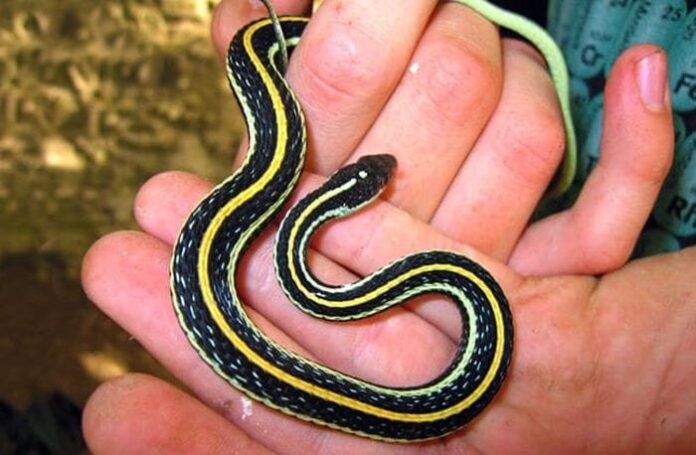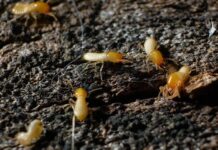Just like we have to deal with certain animals and pests, we would also have to deal with certain snakes in our gardens as well.
This is why you need to pause for a minute and think what you would do or what would happen if you come in contact with a snake in your garden or around your planting area. The possibility of this happening is very high as snakes are lovers of moisture and freshly cool soil.
This review is aimed at bringing garden snakes to your notice as we have been getting questions lately like what is a garden snake and what does it look like.
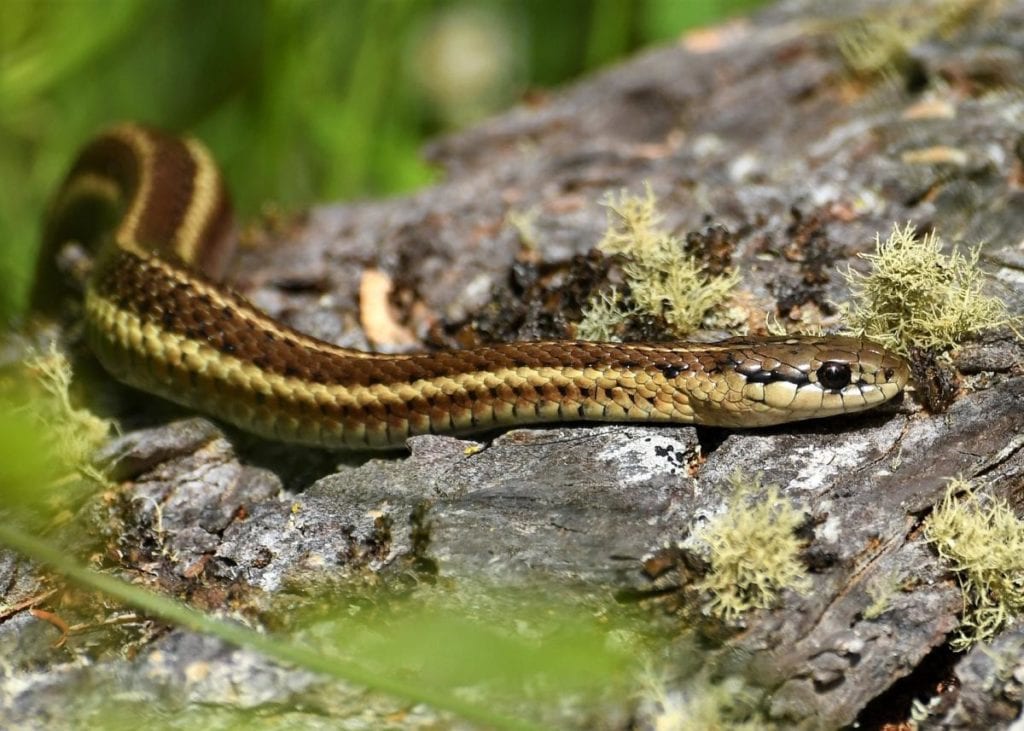
Interesting Guide – Growing A Garden With Your Toddler
All the information that we have gathered about garden snakes pointed to the direction that garden snakes are likely to be in your pond, stream or garden and sometimes, you might get to find a huddle of these snakes together or maybe residing under broken branches.
In some cases, you might get to see these snakes on rocks sunning themselves and in other news, we believe that these are the most primitive type of snakes so we encourage you to keep reading this review and learn more about this interesting type of snake.
How To Identify A Garden Snake
One important thing that you should learn if you own a garden is knowing what a garden snake looks like and this is very key in helping you not to get frightened anytime you come in contact with it in your garden.
These snakes are small in sizes and in most cases, they do not tend to grow more than two or three feet with white, yellow or red markings on their body. Their stripes are also one of the best easiest ways you can get to identify a garden snake in your garden.
What Is A Garden Snake And What Does It Look Like
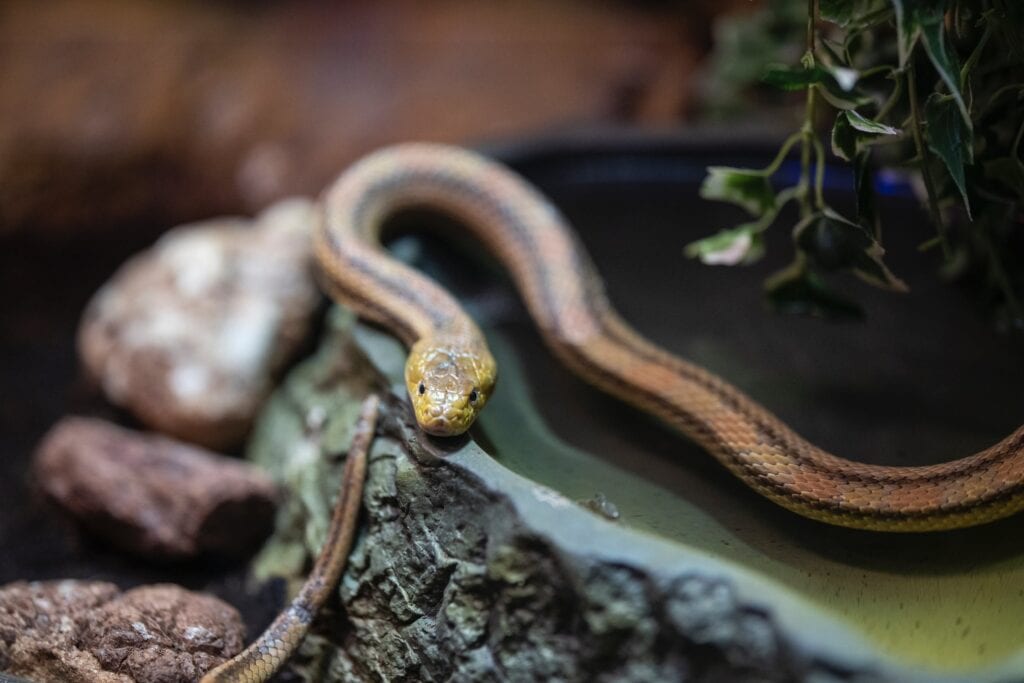
Garden snakes otherwise known as garter snakes can be found in various varieties, have different markings and also have varying colors but all of these are dependent on the area you are in your country. The snakes might usually have a black or brown color but sometimes, you might find a garden snake with a greenish color.
They also have a checkboard pattern right beside their stripes and there are also other varying colors that a garden snake or garter snake might possess.
Below are some of the varying color patterns of garter snakes;
- Garter snakes found in Florida are known for having a blue color
- In Texas, you are likely to encounter a checkered garter snake and these types of snakes seem to be very effective at night. Garden snakes are known to move during the day but when the temperature gets too high, they won’t and this explains why they tend to become very active at night.
- We have ten or more garter snakes in some northern states and California as well
Trendy Review – How To Grow Gourmet Edibles At Home
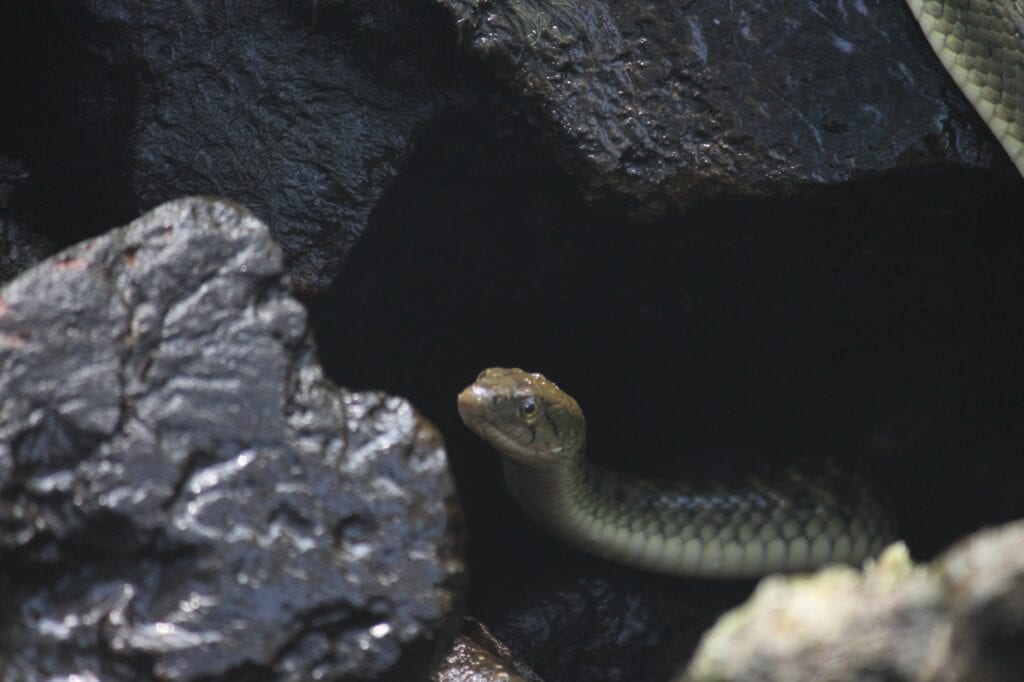
One key thing that you must learn to do with garter snakes is to learn how to co-exist with them and the fact still remains that this species of snake isn’t harmful to humans.
However, in your garden, they can prove to be more of an ally than an enemy and this is why you should take identifying these types of snakes quite seriously so you don’t mistake them or the average venomous snake.
One of the ways to keep out a snake from your garden if you find it hard to tolerate them is through habitat modification.
Nonetheless, this doesn’t mean you shouldn’t be careful when gardening as you have to make sure that you are well protected against snake bites from venomous snakes that are not garter snakes.
You should wear snake-proof leggings and boots which are made out of heavy-duty materials that would make sure the fangs of a snake do not penetrate your boots. You can get this type of boots at your local sporting store.
One last thing that you should also do in protecting yourself from harmful snakes while gardening is through wearing gardening gloves and also observing carefully when picking up debris, pulling out weeds, lifting rocks and also pulling out roots.
You should take a careful step backward if you eventually come in contact with a snake that isn’t a garter snake in your garden and allow it to slither away.
Related Post – Why Fall Is The Best Period For Planting

